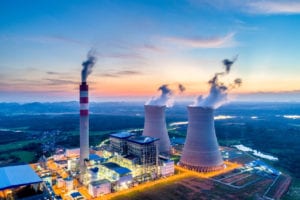Most facility managers know what it’s like to have demanding tenants.
But if your tenants are penguins, sharks, and seahorses? Then you’ve got really demanding tenants.
At Shedd Aquarium in Chicago, environmental controls are vital for the health of its 32,500 residents, whether it’s maintaining the flow of water through their habitats or ensuring temperatures remain consistent. This poses quite the challenge for Shedd, as the building’s HVAC and water systems are tasked with mimicking ecosystems from around the world. In one room, they recreate the cool waters of the Pacific Northwest, and in another, the tropics of the Caribbean.
Another layer of complexity
Adding to these daily building control challenges is the aquarium’s new Master Energy Roadmap, the ambitious strategic plan to cut 50 percent of the building’s energy use by 2020. The two priorities, reliability and efficiency, put the facilities team in a challenging spot.
Bob Wengel, Shedd’s VP of Facilities, knew he needed to partner with a company that could understand utility incentives, deliver turnkey solar and battery solutions, and offer end-to-end environmental controls solution — so he chose Schneider Electric.
Years ago, Shedd Aquarium and Schneider Electric implemented a user-friendly environmental control coding system that helped them cut energy use by 26 percent. The team also tightened up environmental controls to ultra-tight set points, such as a ±0.1°F variance in the seahorses’ tank.
Based on these early successes and the breadth of its integrated portfolio, Shedd Aquarium named Schneider Electric as an energy management partner in 2013 with the vision of tackling the 2020 goal together.
Diving for deeper savings
In order to reach the 2020 goal, the team worked collaboratively to draw up a strategy built on utility incentives, intelligent BMS analytics software, and a 913-panel turnkey solar solution.
The Schneider Electric team functioned as a trusted advisor and project manager, vetting outside contractors and engineers, perfecting the utility’s incentive program to minimize upfront costs, and strategizing holistically about the building’s systems.
The team also involved outside engineers and contractors throughout the project life cycle to ensure seamlessness between vendors and systems. Once the construction finished, Schneider Electric completed the handoff to the Shedd team with guidance on how to use, maintain, and optimize their new systems for continual efficiency savings.
While 2020 is a long way away, Shedd Aquarium is already well on its way, achieving $33,431 in energy cost avoidance in the first year. Additional energy saving opportunities flagged by Building Analytics were converted into ongoing projects that will continue to yield savings as they are completed.
The value of integrated, holistic solutions and services
All this isn’t to show why Schneider Electric is so great. Instead, the point is to demonstrate the value of partnering with a team that brings holistic knowledge, integrated solutions, and long-standing services expertise to the table — whoever that vendor may be. Shedd Aquarium faced the dual challenges of complex building requirements and ambitious savings goals, and it’s on its way to meeting those goals in part due to its partnership with Schneider Electric.
Watch the video case study of Shedd Aquarium’s state-of-the-art building here.



